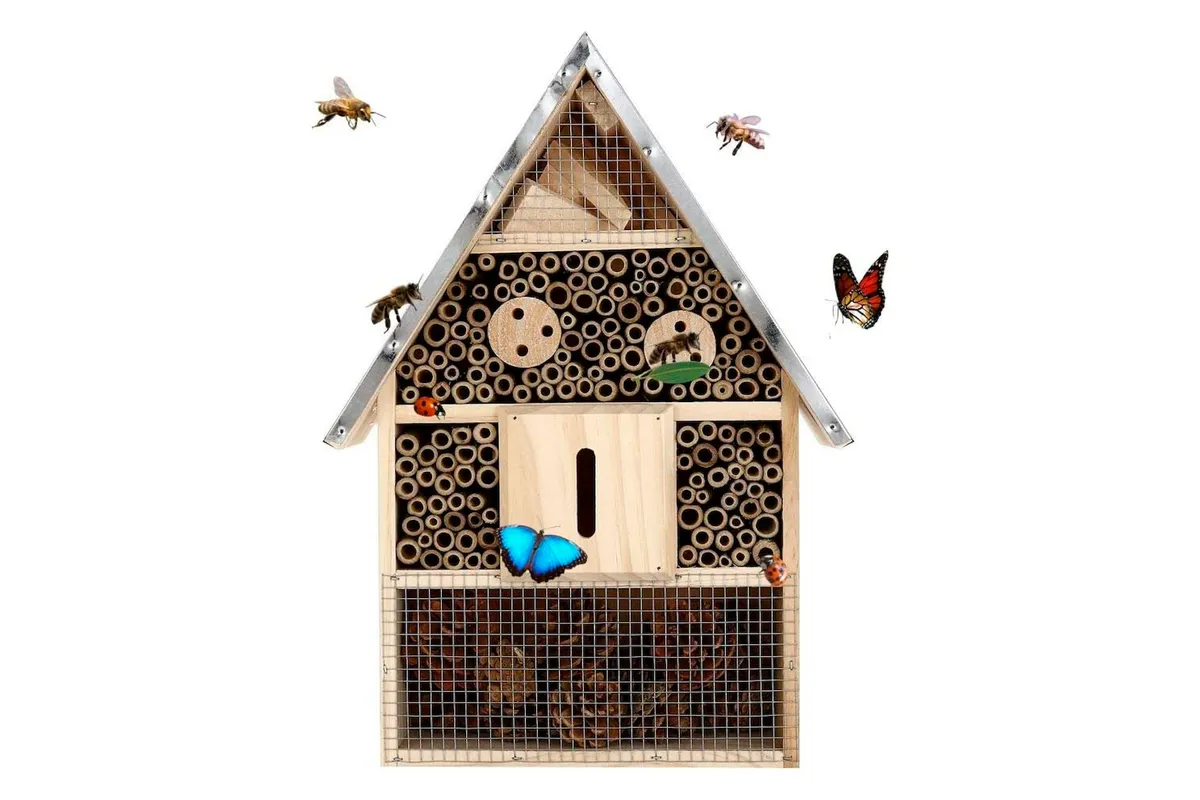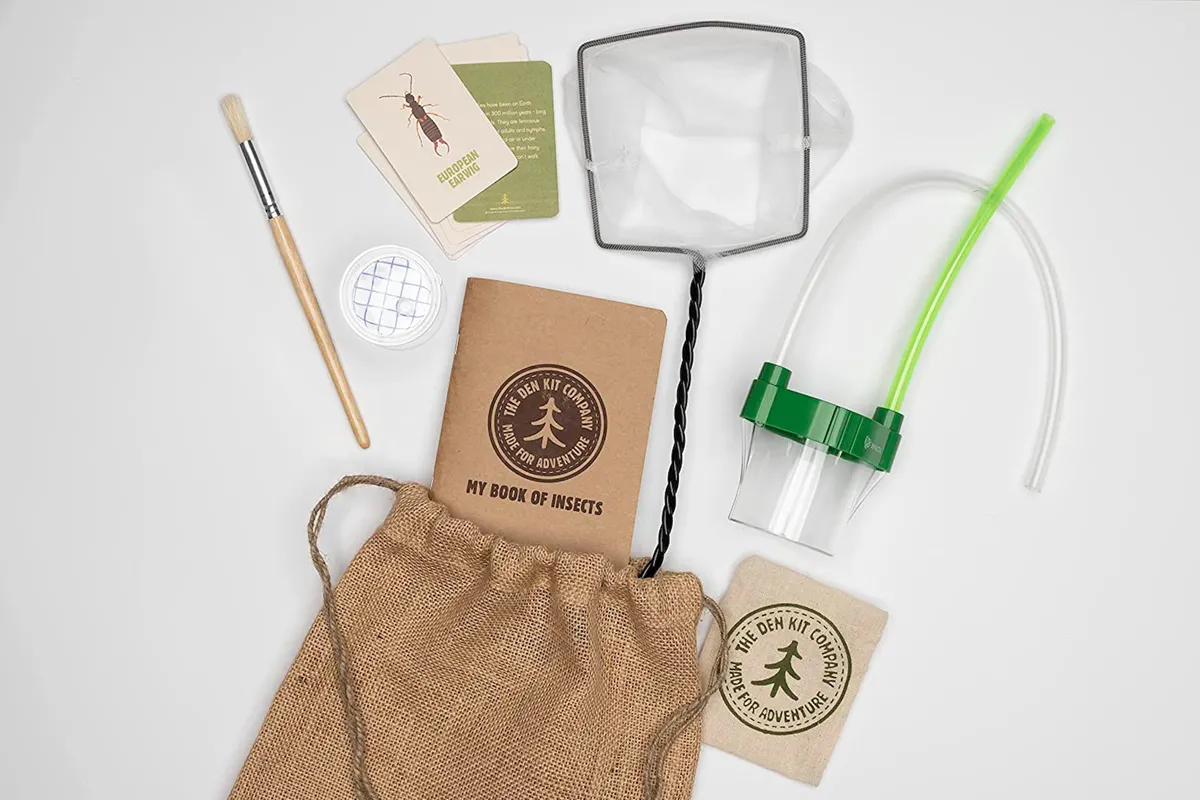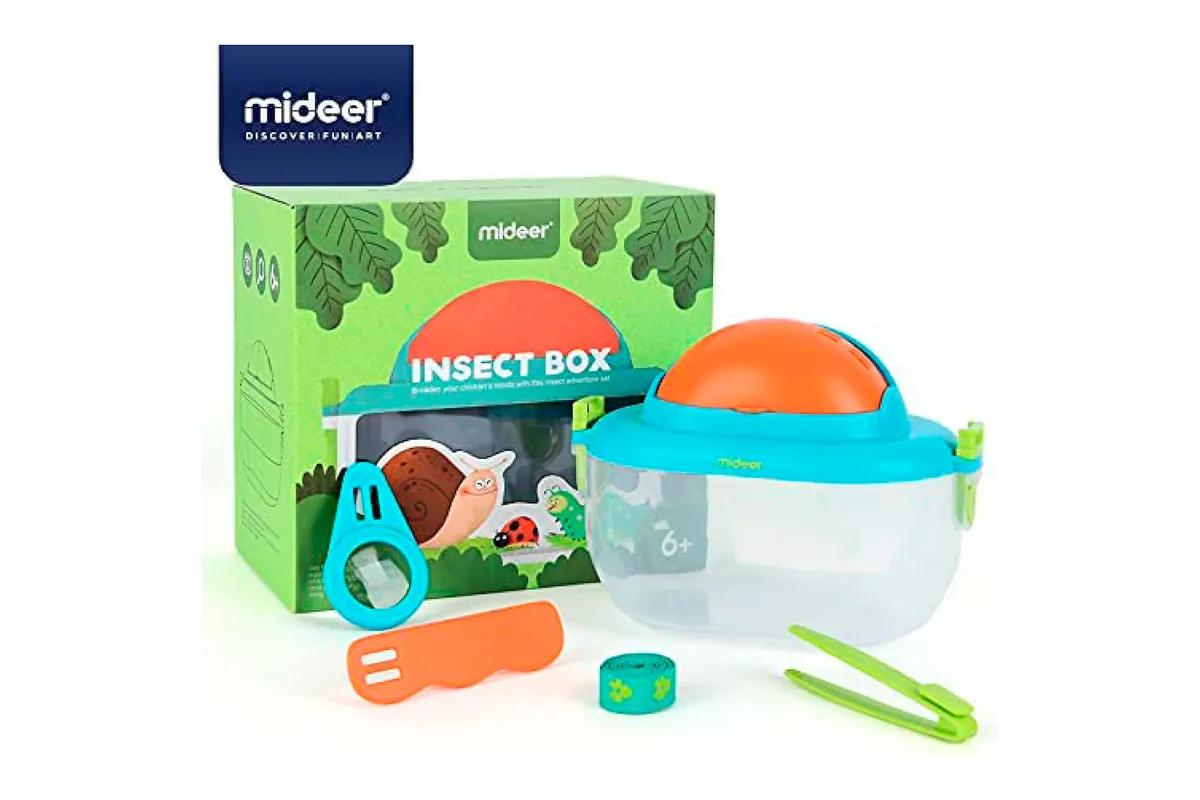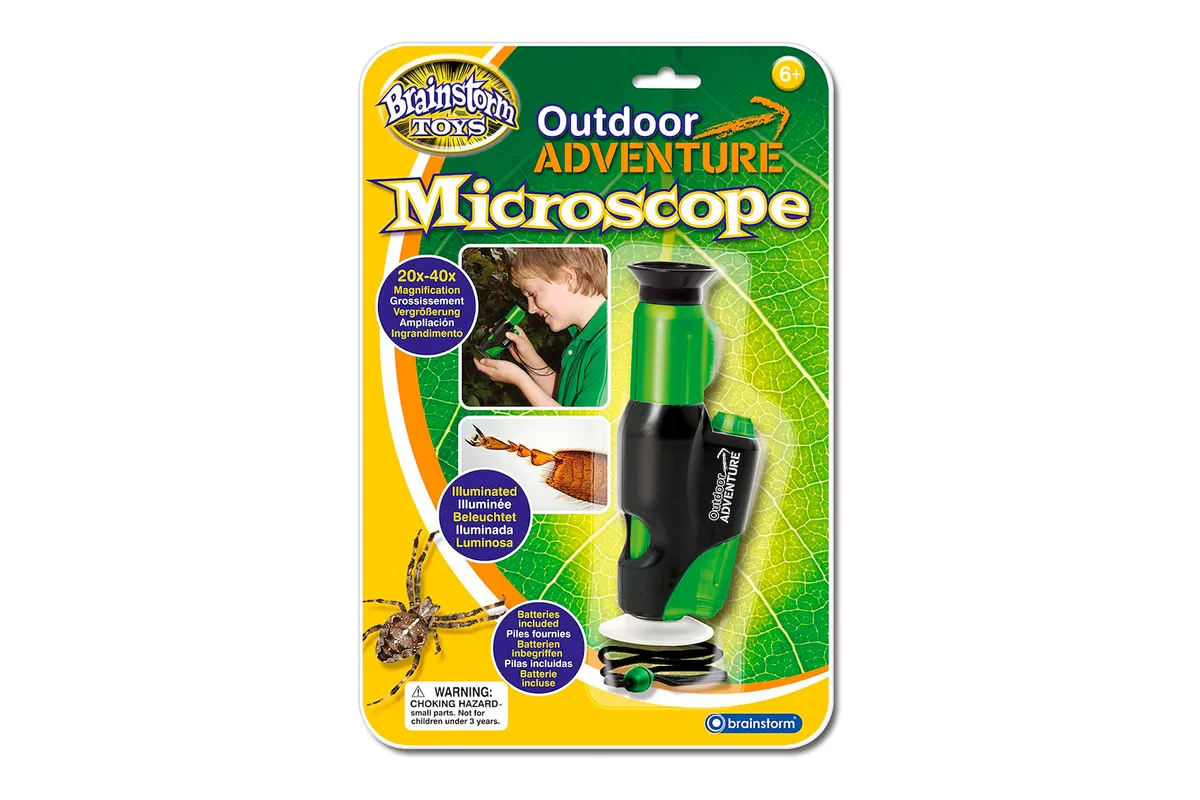Introducing little ones to the mini beasts in your back garden is a fun and interactive way to keep the kids entertained, especially as the weather starts to warm up. Bug catcher kits are an easy way to cultivate their love of creepy crawlies, and develop motor skills as they gently manipulate the equipment.
They make great STEM gifts and help foster a lifelong connection with nature, science, and discovery. From shiny beetles, beautiful butterflies, ferocious centipedes, cute caddisfly larvae, and maybe even a scary wolf spider, there’s a whole world waiting to be discovered – and it needn’t break the bank. You might also like to encourage children to keep a notebook to hand, to quickly record observations or sketch the bugs they come across.
We’ve put together a list of our favourite bug catcher kits for curious kids and budding entomologists.
7 of the best bug catcher kits
Nature Bound: Bug Hunter Set

This bug catcher and habitat kit allows children to study miniature marvels in both daylight and darkness, thanks to a nifty light. This opens up a world of nocturnal critters, like moths and certain beetles, which helps encourage conversations around adaptations for darkness, or how they navigate.
This kit has a patented capture container that lets you safely catch and study insects without touching or harming them, and there’s a built-in magnifier in both the habitat and the vacuum. This particular kit is the winner of the Parent’s Choice Award and has a Seal of Approval from The National Parenting Center.
Bug Safari

This Bug Safari from My Living World is great value for money. It contains a tong-mounted bug catcher, field lens (loupe), magnifying study pot, tweezers and brush (for safely picking up and moving small insects).
The equipment has been designed by naturalist Nick Baker, who you might recognise from CBBC’s The Really Wild Show. There’s also a booklet that tells you how to use the tools to observe creatures safely (for them and you), as well as outlining some of the most common types of bugs that are found in gardens, parks and the countryside (in the UK).
Buddy Wild Insect Hotel

If you’d rather wait for the insects to come to you, then putting up an insect house is a fun alternative. Made from all-natural materials, including wood, bamboo and pinecones, this kit allows you to create nesting habitats, or even hibernation spots for a variety of insects. It’s weather resistant, so you can hang it in your garden, patio, or balcony. Visitors you can expect to see are ladybirds, mason bees, butterflies, earwigs, lacewings, and other beetles.
My Living World bug photography kit

If you have a budding photographer and the ranks, then this bug catcher kit from My Living World comes with a macro lens clip. Clip it into your phone and you can take 10x and 20x magnification photos, without loss of resolution from digitally zooming in. Like the Bug Safari kit above, it comes with a bug identification guide, and instructions on how to use the equipment like a pro.
The Entomology Kit

This bug catcher kit includes a pooter; a nifty little device that allows you to capture bugs via suction, without even touching them. Also included is a net to collect insects from long grass, bushes or water, a set of identification cards, a bug pot with magnifier lid, a brush to gently coax little insects into the pot, and a handy notebook for jotting down observations. The packaging is all reusable; it comes in a natural hessian drawstring bag to keep equipment safe.
The Den Kit Company is based in rural Shropshire, and their products have been sourced with sustainability in mind, and tested by a team of young adventurers.
Mideer Insect Box

This bug-collecting kit is designed for little hands, ideal for younger naturalists. It’s waterproof, so you can take it to the brook to catch sticklebacks, or leave the top off and wait for critters to crawl in. The ventilated lid has a curved, sliding mechanism which allows you to view the bugs directly, and it comes with a magnifying glass, ruler and tweezers. The insect box comes with an adjustable strap, so kids can go hands-free, and hang it up at the end of the day (perhaps that’s wishful thinking…).
Outdoor adventure microscope

Want to take a closer look at the bugs you’ve been collecting? This outdoor microscope is easy to use, and has 20x to 40x magnification. It has LED illumination (batteries included) to allow the specimen to appear dark against a bright background, and there’s no focusing required. A breakaway lanyard allows it to be kept close at hand while outdoors, or even around the home, and it makes a nice addition to your bug-collecting arsenal for those kids looking to take their hobby to the next step.
How to make your own DIY pooter
A pooter (also known as an aspirator) is a device for collecting and observing insects without doing any harm to the insects (or yourself). It has two tubes extending from a resealable lid; one which connects to the user’s mouth (an intake tube), and another which is used to collect the insect. When the end of the collecting tube is placed over an insect, the user sucks on the intake tube, and the insect is transferred into the container. Don’t worry about accidentally ingesting an insect; a filter on the end of the intake tube will prevent this.
These devices are commonly used by entomologists in the field, usually in combination with insect nets.
Here’s how you can make a DIY pooter at home
You will need:
- Clear container with a resealable lid
- Two bendy straws or tubing
- Sticky tape or small elastic band
- Muslin or nylon tights (for the filter)
- Adhesive tac
Step 1
Make two small holes in the lid (or sides) of the clear container. Make them just big enough to poke the straws through. If you’re using a plastic container, use the end of a compass, or a pair of sharp nail scissors to make the initial hole, then widen it gently by inserting a pencil into the hole. For a more substantial container (like a jam jar), use a drill or hammer in a nail to create the holes.
Step 2
Insert your two straws into the holes in the lid, with the ‘bendy part’ closest to the lid. Add a seal around the straws using a mouldable adhesive tac or plasticine.
Step 3
Choose which straw will be your intake tube, and which will be your collecting tube.
For the intake tube, trim around 5cm off the end, then cut a small piece of muslin, gauze, or an old pair of nylon tights, and use it to cover one end. This is what stops you accidentally ingesting an insect, so secure it well. Use some sticky tape, or an elastic band to keep your filter securely in place.
Add a piece of coloured tape on the main body of this intake tube, to help remind you which is which.
Step 4
It’s time to go bug hunting! Head outdoors and look for some small bugs. Make sure they’re smaller than the diameter of the collecting straw, place the collecting tube over the bug, and suck through the intake tube. The insect will be ‘vacuumed’ into the chamber where you can observe them.
Step 5
Once you’ve finished your observations, make sure to carefully return your new friends to where you collected them from!
Read more: